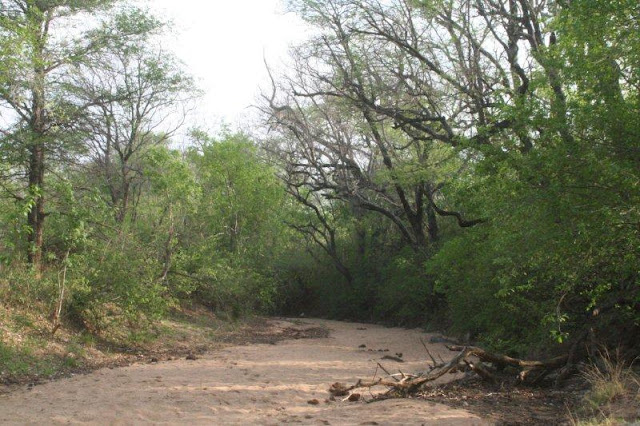Our trips away from Sinamatella in recent weeks have spanned (we hope) the start of the rainy season. Just before the rain we took some of the children from Sinamatella School into the Park to see the animals close up. Living at Sinamatella they are surrounded by animals but rarely get to see them except from the top of the hill where the camp is situated. They were a bit shy at first – no big smiles for the camera!
Grade 7 2012, Sinamatella School.
We headed out to Masuma and were lucky to see lions just after we left the camp, then later a big herd of buffalo. At Masuma we found a scene of devastation. The ‘scooping’ of the dam had come to a temporary halt with heaps of drying mud still piled up around the edges. In the dam, just in front of the viewing point, an elephant lay dying in the shallows, large numbers of thirsty elephants were jostling noisily for water at the trough. A dead buffalo lay behind them, swelling horribly in the sun and at the back of the dam another elephant had collapsed and was barely alive.
An elephant dies in the water at Masuma
At the trough.
The smallest elephant in the second photo above had a large wound on the side of its trunk through which water leaked whenever it tried to drink. It was forced to take many small sips but the bigger elephants allowed it to stay at the trough for a long time without bullying it. The wound was pink and clean and will probably heal.
With two dying elephants and a dead buffalo close to the viewing point we arranged to return the next day to “clear up”. The buffalo was easy and we soon towed him away to what is becoming a large graveyard well beyond the dam.
One of the elephants was dead and also soon towed away but the other was still just alive and had to be finished off first – not at all a pleasant way to spend the morning.
Much better was a trip out to Inyantue from which we have just returned. The Inyantue area has had at least two quite good rain showers so far and is, to our eyes anyway, luxuriantly green. The river hasn’t flowed yet…….
Inyantue River
In the Mopane woodlands we found the flowers of the ‘fire lily’ Scadoxus multiflorus……
And grass seeds sprouting between the dead Mopane leaves…..
Unfortunately we didn’t find what we were looking for – rhino. None has been seen in this area for several years but we had hoped that maybe one or two were there, unknown. It seems not.
The main Bulawayo to Victoria Falls railway runs close to where we camped. Long ago the lines took a different route and Sue was struck by the contrast in the monumental style of a bridge for the old line…..
Remains of the old bridge at the Makwara River
And the functional crossing of the new line a few hundred meters down stream.
In the past the Inyantue area has been the scene of a great deal of activity both for the railway and for mining. Out in the hills while we were walking, we found numerous prospecting trenches and a few old claim markers, the oldest still legible dating back to 1966. Presumably whatever the miners were looking for wasn’t there in sufficient quantities as there are no active mines and everything is back to being wild, overgrown and used only by the animals …..
If only the rhino population could bounce back as easily as the bush does.






















